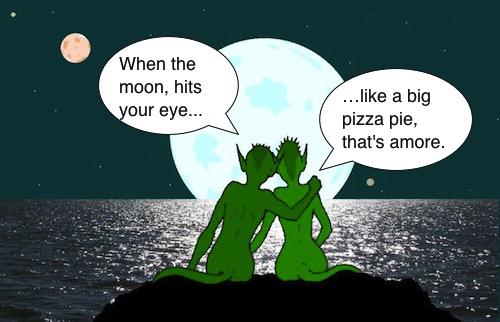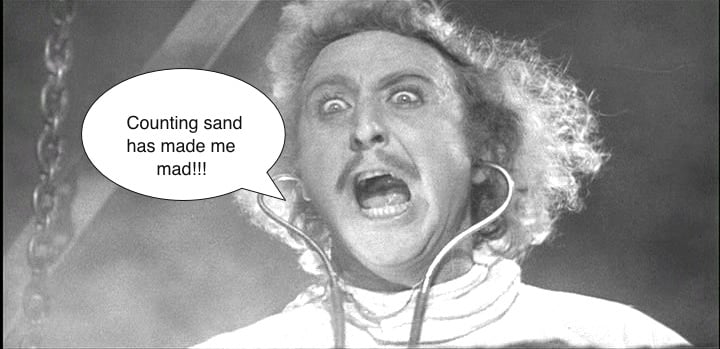This topic is an important one for ESL writers because it covers two small but incredibly important words in the English vocabulary: “the” and “a.” These two seemingly insignificant words are called articles. If you are an ESL writer who wants to write more fluently and naturally, you’ll want to learn to use them.
I can’t tell you how many ESL papers I’ve edited where the author simply leaves articles out of sentences. The resulting sentences read like these ones:
As you can see, the result is language that is unclear and incorrect.
The good news is that the English language only uses two articles: “the” and “a” (or “an”). This is easier than a language, such as Spanish, that has fourteen articles but, perhaps, more difficult than a language, such as Gaelic, that has no articles at all.
So with only two of them to learn, using articles in English should be a pretty easy task? Right?
Not necessarily. The difficulty comes from the many nuances of correctly using articles.
In this post, I’m going to outline the various rules of article usage and help you get a grasp on using definite and indefinite articles in English. Next time you write a paper, hopefully you won’t misuse them or leave them out.
Articles Defined
Let’s define the terms we’re working with.
First of all, articles are adjectives, which means they modify nouns. You only use an article before a noun. Let me show you how this works. In the following examples, I will bold all articles and italicize all nouns.
In this sentence, the article “the” modifies both nouns, “bear” and “trash.”
Here is another sentence:
![]() “Somehow, an armadillo had crossed the river.”
“Somehow, an armadillo had crossed the river.”
In this sentence, the article “an” modifies the noun “armadillo,” and the article “the” modifies the noun “river.”
Remember, since articles are adjectives, they always modify nouns. You wouldn’t, for instance, use an article to modify a verb…
![]() “Can you the help me a lift this box?”
“Can you the help me a lift this box?”
Or an adverb…
![]() “He walked the slowly down Park Avenue.”
“He walked the slowly down Park Avenue.”
All right, so at this point you’ve learned that there are two articles in the English language and that they are adjectives that modify nouns—and only nouns. Let’s move on.
Using Adjectives with Articles
When adding adjectives to your sentence, place them between the article and the noun. Watch what happens to this sample sentence when we add the adjective “sneaky.”
![]() “The sneaky bear ate the trash.”
“The sneaky bear ate the trash.”
In this sentence, “the” modifies “bear,” and so does “sneaky.” When considering the order of adjectives, “the” comes first. Let’s add another adjective to our sentence:
![]() “The sneaky, fat bear ate the trash.”
“The sneaky, fat bear ate the trash.”
As you can see, you write “the” before the adjectives “sneaky” and “fat,” followed by the noun “bear.”
Let’s try that again:
![]() “Somehow, a courageous armadillo had crossed the raging river.”
“Somehow, a courageous armadillo had crossed the raging river.”
Again, the article comes first, followed by any additional adjectives (“courageous” and “raging”), followed by the noun.
Now that you have an idea of what an article is and how it is used in a sentence, let’s talk about the difference between definite and indefinite articles.
Definite Article—”The”
“The” is a definite article, and it modifies a specific noun.
What makes a noun specific? Good question. Here are three ways a noun can be specific:
- A noun is specific if it represents a single member of a group.For example, if I write, “get the blue bowl,” I’m asking you to get a specific bowl from a group of bowls—the blue one.
- A noun is also specific if the writer has already mentioned it before in the text.Let’s say I write, “I always wanted a car, so when I got my first job, I bought myself a red convertible. The car was beautiful.” In this example, I write “the car” because in the previous sentence, I identified which car I was talking about. I’m not discussing just any car—I’m talking about a specific car.
- Finally, a noun is specific if it is common knowledge and both the writer and reader are aware of its existence.Consider this sentence, “The moon was full that night.” Unless I’m writing a science fiction novel, there is only one possible moon that I could be talking about—it is definitely the moon. You know, the one you can see in the sky whether you’re in the U.S. or Korea. Yeah, that one.Other examples include references to known and common nouns, such as the sun, the ground, and the sky.

Got it? Use the definite article “the” when you are talking about a specific and known noun.
Now, let’s move on to indefinite articles.
Indefinite Article—”A/An”
“A” (or “an”) is an indefinite article, and it modifies a non-specific or general noun.
What makes a noun non-specific?
- A noun is non-specific if it refers to any member of a group.
For example, if I write, “get a bowl,” I’m asking you to get any bowl from a group of bowls— I’m not specifying which one. - A noun is non-specific when the writer is mentioning it for the first time in the text.
For example, I might write, “It was a beautiful car.” In this case, this is the first time I’ve mentioned the car, and it is, so far, a general and non-specific noun.
A Note About “An”
Are you wondering about the difference between “a” and “an”?
In English, you use “an” whenever the following word starts with a vowel sound.
-
 An avocado
An avocado  An earring
An earring An hour (In this example, even though the letter “h” is a consonant, when you say “hour” out loud, it starts with a vowel sound—so use “an.”)
An hour (In this example, even though the letter “h” is a consonant, when you say “hour” out loud, it starts with a vowel sound—so use “an.”) An excellent movie (In this example, even though “an” modifies “movie,” because the article is placed before an adjective with a vowel sound (“excellent”), you use “an.”)
An excellent movie (In this example, even though “an” modifies “movie,” because the article is placed before an adjective with a vowel sound (“excellent”), you use “an.”)
Use “a” whenever the following word starts with a consonant sound.
 A fingernail
A fingernail A trampoline
A trampoline A delicious apple (In this example, even though “a” modifies “apple,” because the article is placed before an adjective with a consonant sound, you use “a.”)
A delicious apple (In this example, even though “a” modifies “apple,” because the article is placed before an adjective with a consonant sound, you use “a.”)
When Not to Use Definite and Indefinite Articles
There are many cases when you don’t use an article before a noun. This is called a zero article, which is just a fancy way of saying you don’t use any article at all.
No articles before proper nouns
In English, we don’t place articles in front of most proper nouns. For example, don’t use an article before a person’s name. I’m not “the Naomi” or “a Naomi.” I’m simply Naomi. Likewise, Lady Gaga is not “the Lady Gaga.” Here are a few more examples:
However, an exception to this rule is when “the” is part of the name, as in the band name, The Doors.
Other exceptions to this rule include:
- Plural country names, such as The United States and The United Arab Emirates.
- Names of universities that include the word “university,” such as The University of California and The University of Colorado.
- Names of rivers and mountain ranges, such as the Amazon River and the Himalayas.
Check out this post for more examples of definite article exceptions.
Never use an indefinite article to modify a plural noun
You will never use “a/an” before a plural noun. “A/an” only works as a singular—in fact, “a” literally means “one.” So it can only refer to one thing at a time. Therefore, if you are writing about non-specific plural nouns, you use the zero article (remember, that means no article at all).
You can, however, use the definite article “the” before plural nouns, assuming you want to be specific about the plural noun.
 The apples make me sick. (In this case, I’m referring to specific apples.)
The apples make me sick. (In this case, I’m referring to specific apples.) I bought the books today. (In this case, I’m referring to specific books.)
I bought the books today. (In this case, I’m referring to specific books.)
Don’t use an indefinite article to modify noncount nouns
I can hear you saying, “What is a noncount noun?” Basically, a noncount noun—otherwise known as a mass noun—is a noun that you can’t count! For example, you can’t count liquids like water, wine, or juice, and similarly, you can’t count grains of rice or sand (unless you are a mad scientist, I suppose).
 Since you can’t count these nouns, you wouldn’t use an indefinite noun, as in the following sentences:
Since you can’t count these nouns, you wouldn’t use an indefinite noun, as in the following sentences:
Sometimes you can use the definite article “the” when referring to noncount nouns but only when you are being very specific.
![]() I like the rice. (In this example, I like that specific rice—most likely, it’s the rice I’m eating at the moment I mention it.)
I like the rice. (In this example, I like that specific rice—most likely, it’s the rice I’m eating at the moment I mention it.)
But usually, you would just use a zero article in these cases:
Definite and Indefinite Articles in Summary
As it turns out, there is a lot more to those two little English words than you might have thought. I know it’s complicated, but the more you practice, the easier it will become.
In the meantime, I’ve created a handy table for you to print out and post by your computer. Hopefully, it will help you remember when to use articles and when not to.[sociallocker]
 [/sociallocker] And when you’re ready, test yourself using this quiz on English articles.
[/sociallocker] And when you’re ready, test yourself using this quiz on English articles.
Don’t worry about being perfect in English. The important thing is to keep learning and keep reading and writing. If you enjoyed this lesson, you might also enjoy this lesson on English prepositions.
Good luck!

